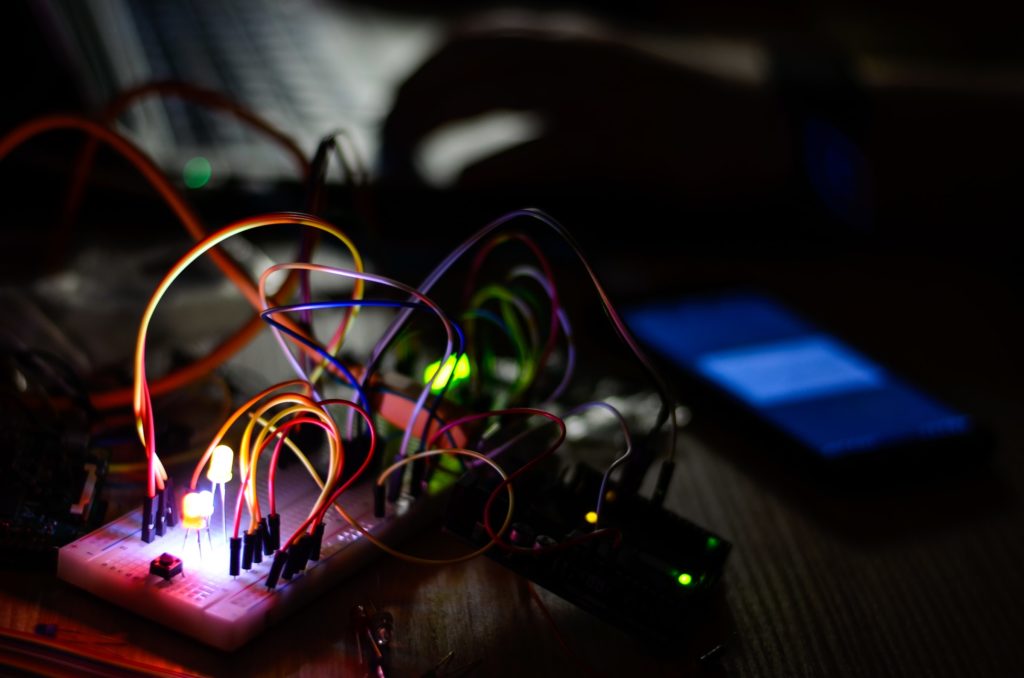Women’s Technology Program 2021: the sweet sound of success
 Photo credit: Victor Aznabaev, Unsplash.
Photo credit: Victor Aznabaev, Unsplash. Every summer, a new cohort of high school students come to MIT’s Cambridge campus to learn, not only about STEM, but about their own potential to excel. The Women’s Technology Program (WTP), now in its 19th year, brings high school students with little to no engineering and computer science experience to Cambridge every summer for an immersive, four-week exploration of all things engineering. But in the summer of 2021, the unprecedented public health challenge of COVID forced the staff of the summer program to reimagine WTP—labs, hands-on classes, team-based projects, and all—as an exclusively online offering.
“This was an enormous challenge, and our instructors and tutors in both curriculum tracks of WTP-EECS and WTP-ME rose to that challenge,” said Cynthia Skier, Women’s Technology Program Director and WTP-EECS Track Coordinator. Not only did the WTP staff (graduate and undergraduate MIT students, plus several recent MIT grads and a student from nearby Wellesley College) design a fully virtual curriculum, they also sprang into action to create boxes of materials, tools, and equipment that were shipped to every participating student, enabling them to create fun, hands-on lab projects at home.
Of course, to nascent engineers, fun looks a little different. “One of my favorite parts of WTP is just that you struggle,” says student Hannah, who participated in the summer 2021 WTP-EECS. “Whether it’s because of a line in Python that isn’t working just as it’s supposed to or a circuit that you’ve been fighting with, the goal of WTP isn’t to avoid making mistakes. It’s to make those mistakes and then learn from them.”
To support students as they engaged in productive struggle, the WTP-EECS track facilitated Zoom and Slack channels that students could use to bounce ideas off each other, share videos of their work, troubleshoot each other’s code, and even upgrade each other’s projects, as in the case of student Annie’s Arduino piano—a musical circuit that plays a single note per aluminum-foil “key”, and whose programming was adjusted and improved by suggestions from her “lab partner” — another WTP student across the country. Those collaboration sessions, which often extended late into the night, helped make all the students’ socially distanced summer a bit less isolating. “I loved staying up late working through problem sets with other people, taking random Buzzfeed quizzes, and just getting to know each other,” reported student Angelica. Student Nathalie agreed: “I’ve never really talked to many people who share similar interests as me, but through this program I was able to meet a lot of people my age who shared the same interests.”
Those interests included building a wide variety of fun and functional devices, from musical instruments (some kitted out with volume controls, others with a rainbow of LED lights); to a working heartbeat monitor; to fully playable games of Tic Tac Toe, Concentration, and Minesweeper. “When I first came in, I didn’t think I would be able to build any of this stuff, but now I’m super excited to continue building,” said student Jennifer L.
The final day of WTP culminated in a Zoom show and tell, with videos the students had made, many with soundtracks and clever editing. The WTP-ME students presented their team Rube Goldberg machines, demonstrating their newly acquired knowledge of a broad range of topics in Mechanical Engineering. The WTP-EECS students demonstrated various EE and CS projects they had made over the four weeks, and talked about their learning experiences. One student, Vibha, even assembled a short EE project in real time for the appreciative audience—carefully donning her safety goggles first. “Ta da!” she said, lighting the project. “Here is the lit-up LED which once would’ve taken me the whole week to build and which now just took me a few seconds.”
Increased confidence in their own skills is just one of the many benefits these students will take away from their experience in WTP. “Growing up in a school where there’s a lack of STEM opportunities, I was really glad to be part of this great community, and will always regard it as a turning point in my education,” reported student Zainab. “I really appreciate how all the tutors would stay back and help assist well after class.” Her sentiments were echoed by student Tyler: “I can say with 200% certainty that my expectations were beyond exceeded. I am so happy that I had the privilege of coming to this program and learning more about CS and EE, which is honestly a newfound passion of mine. I’d like to thank all of the donors at MIT for making this possible.”
Next year, with any luck, students will fill MIT’s classrooms and labs again to discover the joys of engineering in person—in the meanwhile, the students who participated in 2021’s unprecedented WTP will take their friendships, and newfound love of engineering, into the future.
To learn more about the Women’s Technology Program visit http://wtp.mit.edu/
Media Inquiries
Journalists seeking information about EECS, or interviews with EECS faculty members, should email eecs-communications@mit.edu.
Please note: The EECS Communications Office only handles media inquiries related to MIT’s Department of Electrical Engineering & Computer Science. Please visit other school, department, laboratory, or center websites to locate their dedicated media-relations teams.